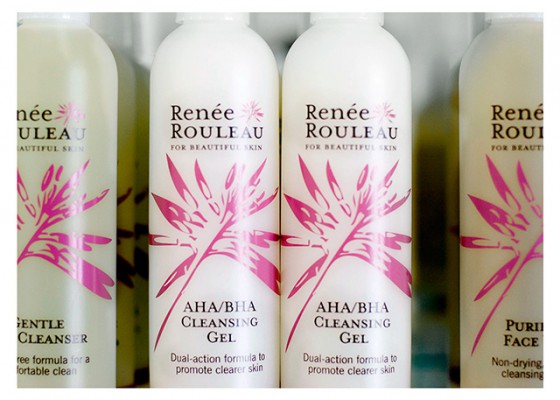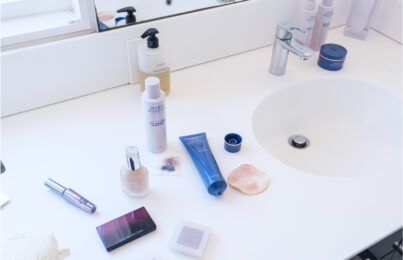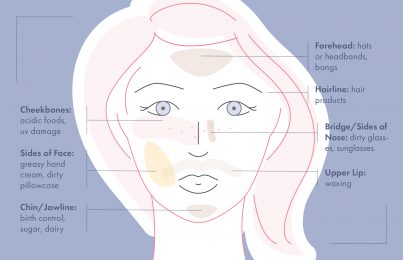Due to hormonal changes, it is common for many teenagers to struggle with the various types of acne. Cysts, pustules, papules, blackheads and more can take a toll on teens’ self-confidence. Whether or not teenage skin has acne, it is still really important to start young with good skin care habits.
Schedule a professional facial.
Hands down, one of the best skin care tips for teenagers is to put your skin in the hands of a professional esthetician. As many mothers can attest, teenagers often tune out their mothers, but they will pay attention to a professional. The benefits of a professional facial are many; professional analysis to determine the needs of the skin type, deep cleansing to clear clogged pores, expert advice with recommendations for a good home care routine, proper skin education offering tips and tricks on skincare, as well as tips for diet and lifestyle.
A professional facial is a good place to start. If the esthetician feels that the teenager would benefit from seeing a dermatologist and getting on prescription medication, then they will recommend so. This path may not always be the best choice, as sometimes parents (including estheticians) may feel that medication might be prescribed too early.
Read: Are Antibiotics Necessary for Treating Acne?
Treat the skin gently.
Teens have extra sensitive skin (especially from 13-15) so it’s important to use products formulated for sensitive skin to avoid the skin becoming red, dry and irritated from harsh products. Synthetic fragrances added to products are the number one cause of allergic reactions, so for a delicate teen’s skin be sure to avoid using products with ingredients such as “fragrance” or “parfum” listed on the back of the bottle, tube or jar. All of the Renée Rouleau skin care products do NOT use artificial fragrances and are safe for a teen’s skin.
Avoid picking at the skin.
While this tip may seem obvious, it is imperative that a teen understands that although breakouts cannot always be avoided, you CAN control what happens once they occur. The truth of the matter is, a blemish usually lasts 5-7 days, but the red or dark scar from picking at the blemish can linger for weeks – or even months.
Read: Are You Guilty of Picking at Your Skin?
Don’t over dry the skin with harsh cleansers and alcohol-based astringents.
Most cleansers and toners formulated for problem skin are designed to dry out breakouts, so they contain strong detergents and alcohols. Drying out infected breakouts where active blemishes are present may be helpful for destroying acne-causing bacteria, but the harsh ingredients will dehydrate non-broken out areas resulting in dry skin cell buildup. This layer of dehydrated skin cells will trap oil and acne-causing bacteria under the skin, which will ultimately cause an increase in breakouts – the last thing a teens’ skin needs! Be sure to purchase cleansers that are labeled ‘sulfate-free’ and avoid the ingredients Sodium Laureth (or Lauryl), Sulfate, and Ammonium Laureth Sulfate. These ingredients can be extremely dehydrating to the skin. See the collection of Renée Rouleau sulfate-free cleansing gels and alcohol-free toners.
Wash skin three times a day.
Bacteria breeds in oil, and because teenagers tend to produce more oil, especially from ages 15-18, it’s important to keep oil off the skin to prevent more blemishes. If possible, wash your skin three times a day (always following with oil-free moisturizer like Skin Recovery Lotion) to keep the pores cleaned. At the very least, cleansing morning and night is a must for teens.
Choose products exclusively for your skin type.
Not all skin types are the same. Every teen’s skin comes with its own unique list of challenges. Blackheads need to be treated differently from blemishes. Harsh acne products will only over dry the skin, perpetuating the problem. It is crucial to seek professional advice. Just because a teen’s friend uses an acne line that has great results doesn’t mean it will have the same for them. See our nine skin types to get products recommended for your skin.
Be sure to use moisturizer.
It’s a fact that skin cells are like fish; they need water to live. Avoiding moisturizing thinking you’re avoiding potential breakout is a myth. Teenage skin needs water, not oil, so by using a water-based, oil-free moisturizer it won’t clog the pores – it will keep the skin hydrated. This is essential for preventing clogged pores and breakouts.
Identify your blemishes and treat them accordingly.
Not all blemishes are equal so before a teen applies a spot treatment, it’s important to identify what kind of blemish it is.
Acne cysts: These are those hard, sore bumps under the skin (most often occurring in the chin and jaw area) that linger for weeks. Your best bet is to leave it alone. Since the infection is not on the surface, traditional spot treatment drying lotions will only dry out your skin, which will cause peeling. Instead of making matters worse, apply ice or use Renée Rouleau Anti Cyst Treatment.
Whiteheads/closed comedones: These are little clogged bumps under the skin that aren’t red or sore, just little white-ish bumps also known as “clogged pores.” Since these have no infection, using harsh acne products will only make whiteheads worse by causing dry skin cell build up, which will trap oil in the skin longer. Exfoliate! Steer clear of the dead skin cell buildup to help the clogged pores purge naturally. A good deep pore- cleansing facial is also beneficial for removing the impurities within the pores. Read more about exfoliating acids.
Papules: The next stage past a closed comedone (whitehead) where bacteria causes inflammation and infection resulting in a painful, red blemish. The main difference between a papule and a pustule is that pustures occur after, when dead bacteria and dead skin cells rise to the surface causing yellow pus. The main symptom of a papule is inflammation and irritation, so the goal is not to dry it out with acne products but rather to calm down the inflammation by using topical cortisone cream (found at the drug store) and ice compresses followed by a soothing mask like Renée Rouleau Bio Calm Repair Masque. These both will reduce the painful inflammation.
Pustules: These are inflamed blemishes that contain pus. Pustules are your traditional “zits” that are most likely to cause post-breakout red or dark scars IF you don’t properly know how to care for them. You MUST NOT touch these until you can see a whitehead. Then you can carefully extract the infected pus and immediately spot treat with our Night Time Spot Lotion. Our Daytime Blemish Gel works very well, too.
Protect the skin with SPF.
Studies confirm that the majority of wrinkles that will appear later in life are from the sun exposure that you got up until the age of 18 – the formative years of your skin. Luckily, there is a lot of awareness and fortunately, I hear a lot of mothers saying how much they encourage their teens to wear SPF and to keep covered up. My favorite sunscreen ingredient for teens is Zinc Oxide. Not only does it give great sun protection, but is also antibacterial on the skin and can prevent breakouts while feeling lightweight. Renée Rouleau Weightless Protection SPF 30 is fabulous for a teens’ skin.
Eat a healthy, well-balanced diet
Despite what you may have heard, chocolate and greasy foods (such as pizza and French fries) do not cause you to breakout. Some teens can get breakouts from too much dairy in their diet (especially acne cysts on chin and jaw line) and also from too many acidic foods, such as fruit and tomatoes (these mainly occur on the cheek area). I once had a teenager that was drinking almost a gallon of fruit punch a day and was getting a lot of breakout on her cheeks. I suggested she try for two weeks to cut back and her breakout cleared up significantly. Obviously the goal with any teenager is to get them to eat a healthy, well-balanced diet, but for the most part foods don’t affect the skin as much as you may have been told.
It’s so important to teach a teenager the importance of caring for his or her skin.
Celebrity Esthetician & Skincare Expert
As an esthetician trained in cosmetic chemistry, Renée Rouleau has spent 35 years researching skin, educating her audience, and building an award-winning line of products. Her hands-on experience as an esthetician and trusted skin care expert has created a real-world solution — products that are formulated for nine different types of skin so your face will get exactly what it needs to look and feel its best. Trusted by celebrities, editors, bloggers, and skincare obsessives around the globe, her vast real-world knowledge and constant research are why Marie Claire calls her “the most passionate skin practitioner we know.”



